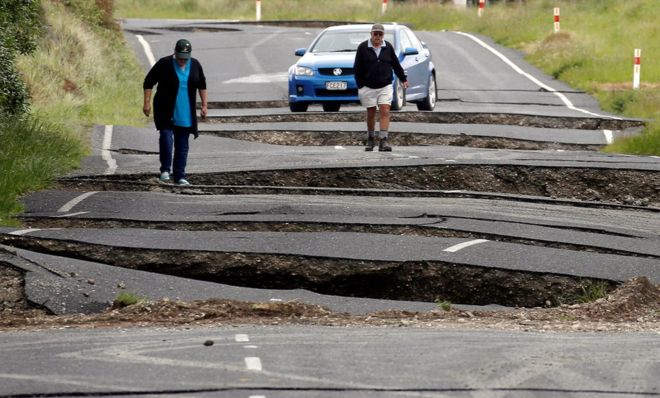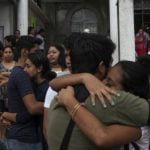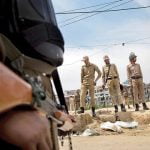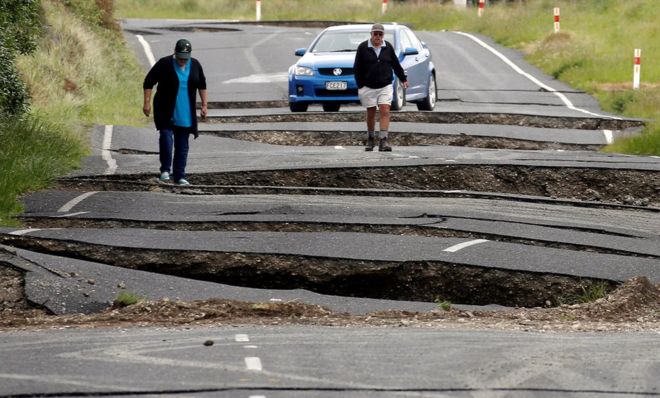
An earthquake measuring 6.3 in magnitude has hit New Zealand’s South Island, hours after an initial quake killed two people.
The new tremor struck at 13:45pm local time (00:45 GMT) at a depth of 10km (6 miles), northeast of Christchurch.
A 7.5-magnitude quake, with the same depth, had hit the same area just after midnight, triggering tsunami warnings.
A large river dammed up by a landslide has now breached its banks sending a “large wall of water” downstream.
Residents around the Clarence River – one of the largest on South Island – are being urged to move immediately to higher ground.
There have been hundreds of strong aftershocks, causing power shortages and cuts in water supply, since the initial quake.
GeoNet, a government-funded project monitoring earthquakes, said the first earthquake was actually two related tremors, and that aftershocks would continue over the next few weeks and months.
 Image copyrightGETTY IMAGES
Image copyrightGETTY IMAGESAuthorities have been rescuing and evacuating residents along the east coast.
New Zealand media reported that a 100-year-old woman and her daughter-in-law were pulled out alive from their home in the town of Kaikoura, after the house collapsed in the first earthquake. The younger woman’s husband died.
A woman also died at Mount Lyford, southwest of Kaikoura, though there are reports she may have died from an existing medical condition.
Waves of around 2m (6.6ft) hit the coast shortly after the first earthquake. Authorities have since lifted the tsunami alert, but are still warning people to stay away from the shoreline.
Residents in Christchurch and surrounding towns have rushed to stock up on basic supplies. Some schools in the affected area have remained closed on Monday.
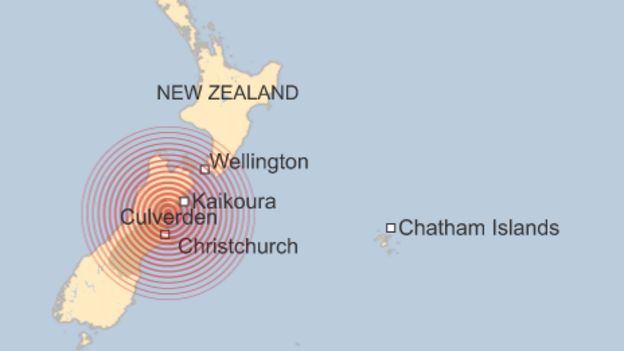
Kaikoura, a popular tourist destination, saw its main road blocked by landslides, with telecommunications, water and power supplies cut off.
The military and fire service have dispatched teams in helicopters to the town, and some people are being airlifted out.
 Image copyrightHENRY MCMULLAN
Image copyrightHENRY MCMULLAN Image copyrightAFP/GETTY IMAGES
Image copyrightAFP/GETTY IMAGESPrime Minister John Key surveyed the affected areas by helicopter on Monday and told reporters that he believed the number of fatalities would remain low.
Civil defence minister Gerry Brownlee told Radio New Zealand that “it looks as though it’s the infrastructure that’s the biggest problem, although I don’t want to take away from the suffering… and terrible fright so many people have had”.
One expert told TVNZ that the low number of fatalities may be due to the fact that the first quake struck in the middle of the night.
“People were safe in their homes, homes might get damaged but they’re safer for the people inside and that’s certainly the blessing of this earthquake,” said Ken Elwood from the University of Auckland.
 Image copyrightAP
Image copyrightAPThe quake was also felt in Wellington on the North Island, where the city’s central business district (CBD) remained quiet on Monday.
Resident Adam Roland told the BBC that workers were moving through the city clearing debris and making sure buildings were safe.
“The CBD’s been closed off so most people are either working from home or not working today,” he said.
 Image copyrightAP
Image copyrightAP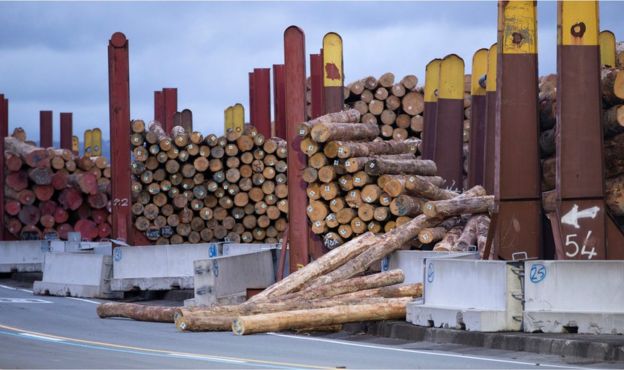 Image copyrightAP
Image copyrightAPGeoNet said the the first quake was the strongest to have hit New Zealand since a 7.8-magnitude earthquake in 2009 in a remote area of the South Island.
New Zealand lies on the Ring of Fire, the fault line that circles virtually the entire Pacific Rim bringing frequent quakes and volcanic eruptions.
Christchurch is still recovering from a 2011 earthquake that killed 185 people and destroyed the city centre.
[Source:-BBC]

